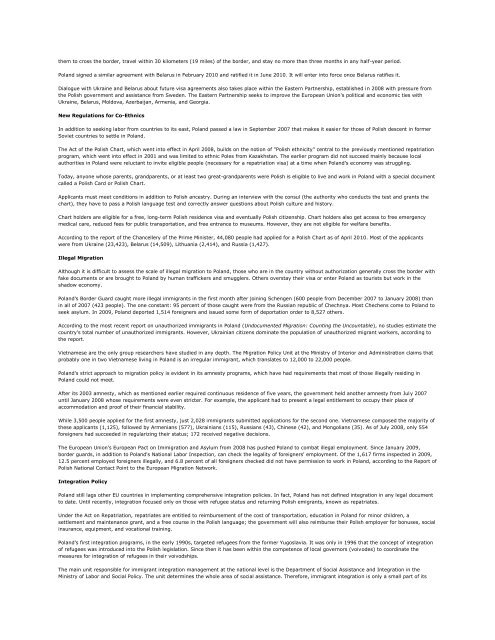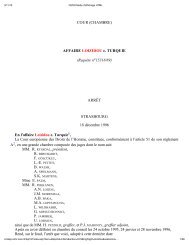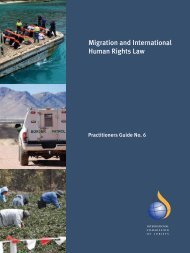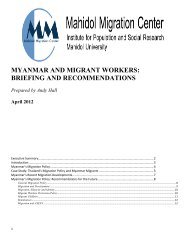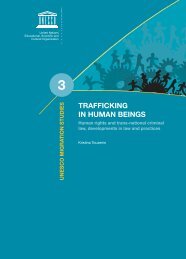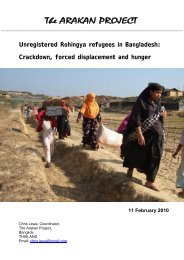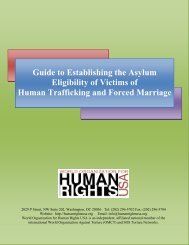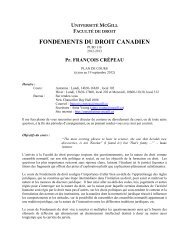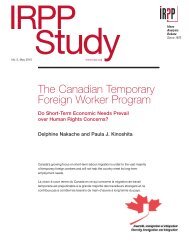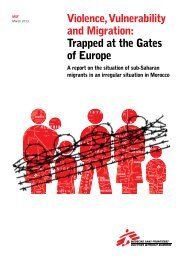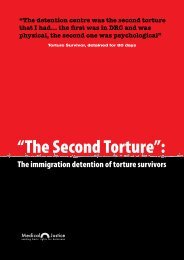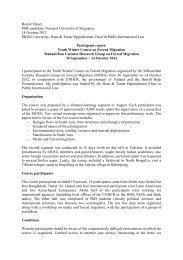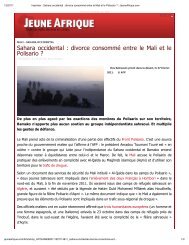EU Membership Highlights Poland's Migration Challenges
EU Membership Highlights Poland's Migration Challenges
EU Membership Highlights Poland's Migration Challenges
You also want an ePaper? Increase the reach of your titles
YUMPU automatically turns print PDFs into web optimized ePapers that Google loves.
them to cross the border, travel within 30 kilometers (19 miles) of the border, and stay no more than three months in any half-year period.<br />
Poland signed a similar agreement with Belarus in February 2010 and ratified it in June 2010. It will enter into force once Belarus ratifies it.<br />
Dialogue with Ukraine and Belarus about future visa agreements also takes place within the Eastern Partnership, established in 2008 with pressure from<br />
the Polish government and assistance from Sweden. The Eastern Partnership seeks to improve the European Union's political and economic ties with<br />
Ukraine, Belarus, Moldova, Azerbaijan, Armenia, and Georgia.<br />
New Regulations for Co-Ethnics<br />
In addition to seeking labor from countries to its east, Poland passed a law in September 2007 that makes it easier for those of Polish descent in former<br />
Soviet countries to settle in Poland.<br />
The Act of the Polish Chart, which went into effect in April 2008, builds on the notion of "Polish ethnicity" central to the previously mentioned repatriation<br />
program, which went into effect in 2001 and was limited to ethnic Poles from Kazakhstan. The earlier program did not succeed mainly because local<br />
authorities in Poland were reluctant to invite eligible people (necessary for a repatriation visa) at a time when <strong>Poland's</strong> economy was struggling.<br />
Today, anyone whose parents, grandparents, or at least two great-grandparents were Polish is eligible to live and work in Poland with a special document<br />
called a Polish Card or Polish Chart.<br />
Applicants must meet conditions in addition to Polish ancestry. During an interview with the consul (the authority who conducts the test and grants the<br />
chart), they have to pass a Polish language test and correctly answer questions about Polish culture and history.<br />
Chart holders are eligible for a free, long-term Polish residence visa and eventually Polish citizenship. Chart holders also get access to free emergency<br />
medical care, reduced fees for public transportation, and free entrance to museums. However, they are not eligible for welfare benefits.<br />
According to the report of the Chancellery of the Prime Minister, 44,080 people had applied for a Polish Chart as of April 2010. Most of the applicants<br />
were from Ukraine (23,423), Belarus (14,509), Lithuania (2,414), and Russia (1,427).<br />
Illegal <strong>Migration</strong><br />
Although it is difficult to assess the scale of illegal migration to Poland, those who are in the country without authorization generally cross the border with<br />
fake documents or are brought to Poland by human traffickers and smugglers. Others overstay their visa or enter Poland as tourists but work in the<br />
shadow economy.<br />
<strong>Poland's</strong> Border Guard caught more illegal immigrants in the first month after joining Schengen (600 people from December 2007 to January 2008) than<br />
in all of 2007 (423 people). The one constant: 95 percent of those caught were from the Russian republic of Chechnya. Most Chechens come to Poland to<br />
seek asylum. In 2009, Poland deported 1,514 foreigners and issued some form of deportation order to 8,527 others.<br />
According to the most recent report on unauthorized immigrants in Poland (Undocumented <strong>Migration</strong>: Counting the Uncountable), no studies estimate the<br />
country's total number of unauthorized immigrants. However, Ukrainian citizens dominate the population of unauthorized migrant workers, according to<br />
the report.<br />
Vietnamese are the only group researchers have studied in any depth. The <strong>Migration</strong> Policy Unit at the Ministry of Interior and Administration claims that<br />
probably one in two Vietnamese living in Poland is an irregular immigrant, which translates to 12,000 to 22,000 people.<br />
<strong>Poland's</strong> strict approach to migration policy is evident in its amnesty programs, which have had requirements that most of those illegally residing in<br />
Poland could not meet.<br />
After its 2003 amnesty, which as mentioned earlier required continuous residence of five years, the government held another amnesty from July 2007<br />
until January 2008 whose requirements were even stricter. For example, the applicant had to present a legal entitlement to occupy their place of<br />
accommodation and proof of their financial stability.<br />
While 3,500 people applied for the first amnesty, just 2,028 immigrants submitted applications for the second one. Vietnamese composed the majority of<br />
these applicants (1,125), followed by Armenians (577), Ukrainians (115), Russians (43), Chinese (42), and Mongolians (35). As of July 2008, only 554<br />
foreigners had succeeded in regularizing their status; 172 received negative decisions.<br />
The European Union's European Pact on Immigration and Asylum from 2008 has pushed Poland to combat illegal employment. Since January 2009,<br />
border guards, in addition to <strong>Poland's</strong> National Labor Inspection, can check the legality of foreigners' employment. Of the 1,617 firms inspected in 2009,<br />
12.5 percent employed foreigners illegally, and 6.8 percent of all foreigners checked did not have permission to work in Poland, according to the Report of<br />
Polish National Contact Point to the European <strong>Migration</strong> Network.<br />
Integration Policy<br />
Poland still lags other <strong>EU</strong> countries in implementing comprehensive integration policies. In fact, Poland has not defined integration in any legal document<br />
to date. Until recently, integration focused only on those with refugee status and returning Polish emigrants, known as repatriates.<br />
Under the Act on Repatriation, repatriates are entitled to reimbursement of the cost of transportation, education in Poland for minor children, a<br />
settlement and maintenance grant, and a free course in the Polish language; the government will also reimburse their Polish employer for bonuses, social<br />
insurance, equipment, and vocational training.<br />
<strong>Poland's</strong> first integration programs, in the early 1990s, targeted refugees from the former Yugoslavia. It was only in 1996 that the concept of integration<br />
of refugees was introduced into the Polish legislation. Since then it has been within the competence of local governors (voivodes) to coordinate the<br />
measures for integration of refugees in their voivodships.<br />
The main unit responsible for immigrant integration management at the national level is the Department of Social Assistance and Integration in the<br />
Ministry of Labor and Social Policy. The unit determines the whole area of social assistance. Therefore, immigrant integration is only a small part of its


